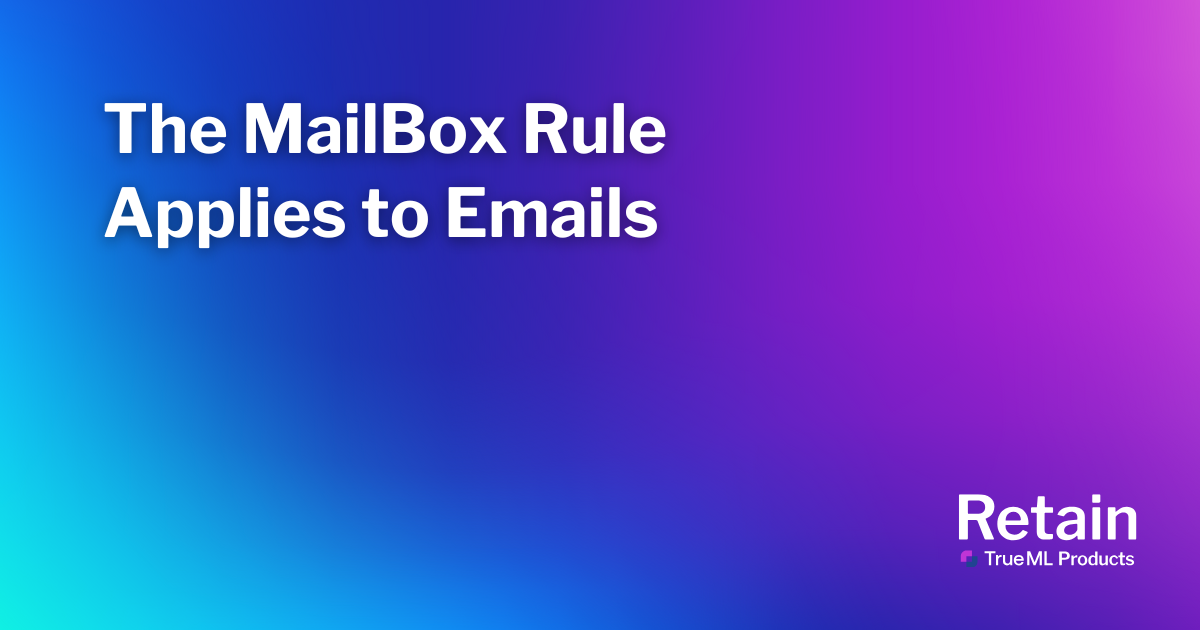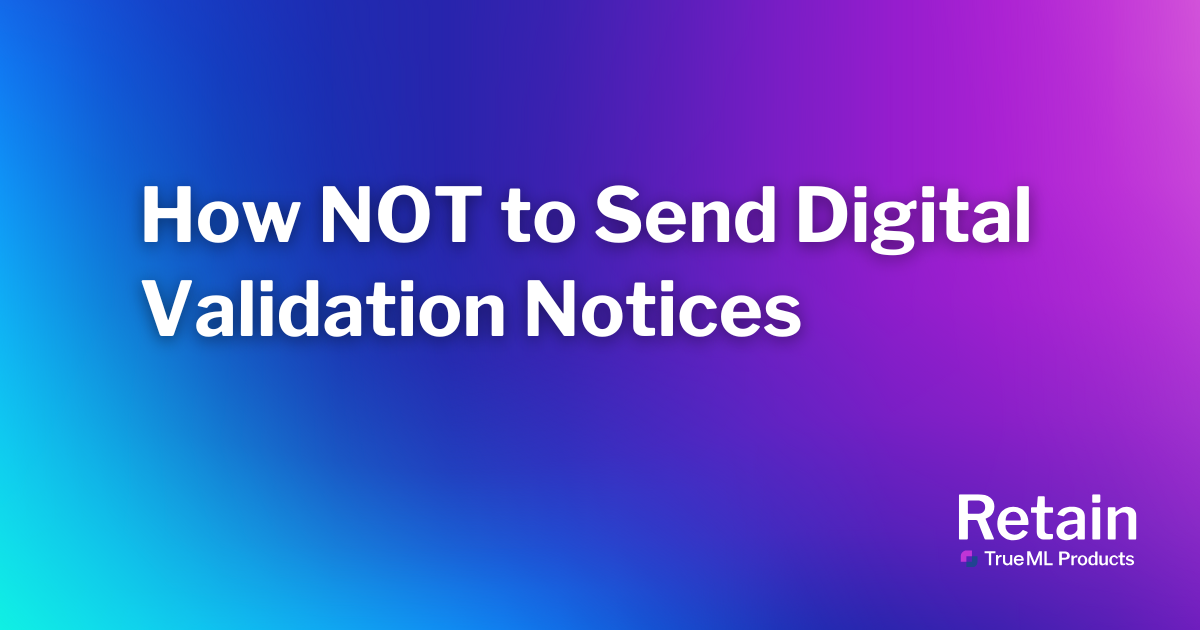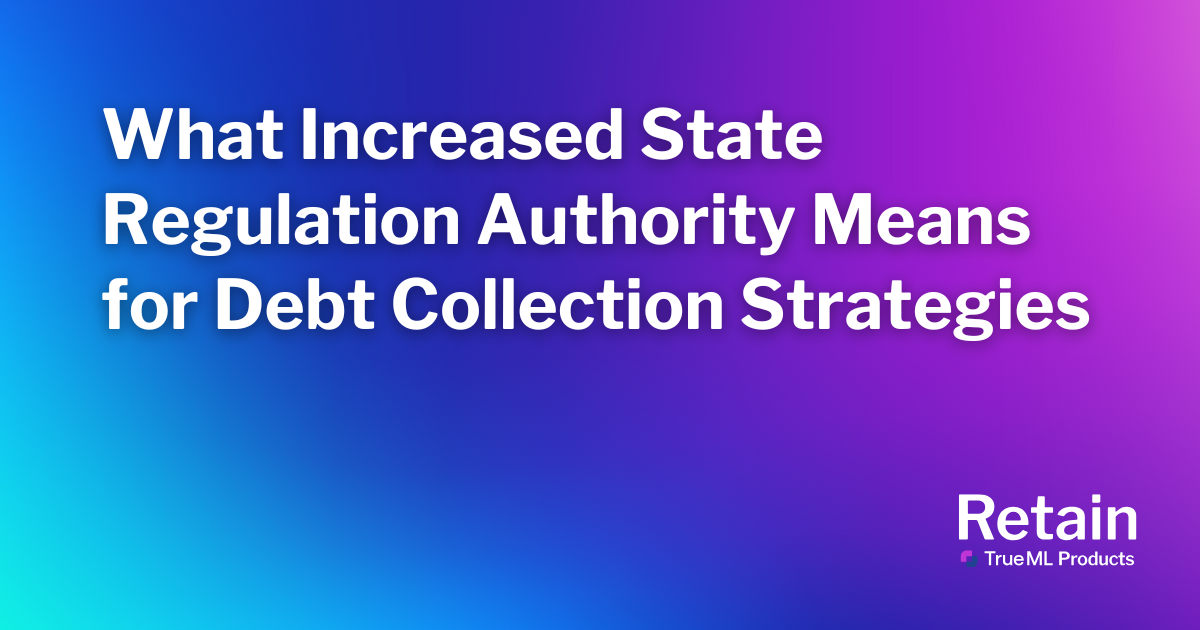How to Compliantly Send Debt Collection Emails to Consumers with Required Disclosures
By Kelly Knepper-Stephens,* Chief Legal Officer, TrueML Technologies
It is not easy to send emails at scale to consumers in debt. There are multiple factors working against companies attempting to do so; everything from throttling issues, deliverability obstacles, and of course, making sure that the email itself meets the federal and state compliance requirements.
An email is not just the four corners of the message when opened. The email consists of the sender’s email domain, the subject line, the body, and any hyperlinks. Debt collectors sending emails must pay attention to all aspects of the email, similar to an initial demand letter where debt collectors already pay attention to the envelope, any glassine window, as well as the content of the actual letter stuffed inside. And, if they do pay attention to all aspects of an email, debt collectors may find themselves in a position to benefit from the same presumption of delivery that exists with physical mail, i.e. the mail-box rule, when emailing electronic disclosures.
Simply put, if a debt collector follows the three factors for sending disclosures electronically enunciated by the Consumer Financial Protection Bureau (CFPB) in the debt collection rule (aka Regulation F), a debt collector may presume that the consumer received the email.
How to Meet the Three Requirements to Presume Email Delivery
The CFPB, through promulgation of Regulation F, provided the debt collection industry with the official regulatory guidance regarding the delivery of required disclosures by email, including when emailing the validation notice as the initial communication (an Electronic Validation Notice or EVN). To send required disclosures electronically, debt collectors must “provide actual notice in a form that the consumer may keep and access later.” 12 CFR 1006.42(a). The CFPB outlines three “relevant factors” to “provide actual notice in a form that the consumer may keep and access later” in the Official Commentary to 12 CFR 1006.42(a) (find it here on the CFPB’s website).
The three relevant factors are:
- Identify the debt collector as the sender of the communication in the name that the consumer would recognize
- Provide the name of the creditor and one other piece of account information in the subject line (not the balance)
- Monitor deliverability by treating hard/soft bounces appropriately.
Let’s explore how to meet these three factors in greater detail.
1. Send emails from your company’s email domain.
Sending debt collection emails from your company’s email domain, i.e. from your company’s email address—this is the best practice not only to meet the CFPB requirement but also for deliverability (making sure the email gets in the customer’s inbox). When a debt collector sends emails containing required disclosures, such as the EVN, from an email address that contains their name, the debt collector is using the “official business name the consumer would likely recognize” or that “the debt collector would use in leaving a limited content message” or “in [the body of] an email message sent to the consumer” (see the CFPB Official Commentary). Importantly, the consumer does not have to open the email to see the domain—the debt collector domain name appears when the consumer is scrolling the inbox, this makes it easy for the consumer to immediately identify the sender of the email, they do not have to open the email to see the official business name. It is the first thing the consumer notices, followed by the subject line, that calls their attention to the fact that the email is from a debt collector.
2. Include the creditor and one other piece of account information in the subject line—not the balance.
The CFPB recognized that it is important to call attention to your email so that the consumer knows what the email is about. Therefore, the CFPB requires the subject line of any email containing required disclosures about a debt to include “the name of the creditor to whom the debt currently is owed” and “one additional piece of information identifying the debt, other than the amount, such as a truncated account number; the name of the original creditor; the name of any store brand associated with the debt; the date of sale of a product or service giving rise to the debt….” The CFPB also suggested using “the physical address of service or the billing/mailing address on the account”—but, depending on how you include this information, these two pieces of information could cause the message to look suspicious, like spam or phishing, and get caught in the receiving email service provider’s filters because the address is related to the consumer not the underlying account. Most of us get lots of emails every day and scan our own inboxes to find important emails by looking at who sent the email and the subject line. The subject line with these two specific account details calls the consumer’s attention to the fact that the email is about a particular debt.
3. Monitor deliverability notifications and treat them appropriately.
To properly send required disclosures electronically, including an EVN, a debt collector must monitor deliverability. In fact, the CFPB Official Commentary makes clear that if a debt collector receives notice that the email was not delivered, or hard bounced, then the email and the disclosures have not been sent to the consumer. Just like physical mail that is returned to sender, a hard bounce notifies the debt collector that the email address is incorrect or the email service provider did not deliver the email. Therefore, policies and procedures are necessary to properly update accounts when a hard bounce occurs that the email did not send. With email there is also a soft bounce, or notice from the consumer’s email service provider that email did not get accepted but may be accepted if sent at a later date and time. This means that the email address is valid, but the email has not yet been sent. In this case, policies and procedures are necessary to explain additional attempts to send the email until the email service provider gives notice of delivery.
So, if a debt collector follows these three steps when sending an EVN or other required disclosures electronically, the debt collector can presume delivery of the communication. Using email, though complicated, is a cost effective manner for debt collectors to provide required disclosures such as the initial validation disclosures in an EVN, payment confirmation disclosures, payment plan reminder disclosures, e-sign disclosures, and even debt validation documentation. Make sure to send these emails from the debt collector’s email domain, with a subject line containing the name of the creditor and one other piece of account information that is not the balance, and monitor deliverability notifications with appropriate account notes, processes, and policies for hard bounces and soft bounces. There may be other ways to satisfy these relevant factors for sending required disclosures electronically, you should talk it over with your counsel and compliance professionals.
TrueML Products’ Retain solution includes an Electronic Validation Notice product that not only mirrors the model validation notice provided by the CFPB in Regulation F but is specifically designed so clients can meet all three factors necessary to deliver required disclosures electronically. If you have questions about our product Retain and its EVN feature, please feel free to fill out a consultation form here.
*This blog is not legal advice. Legal advice must be tailored to the particular facts and circumstances of each unique matter.



